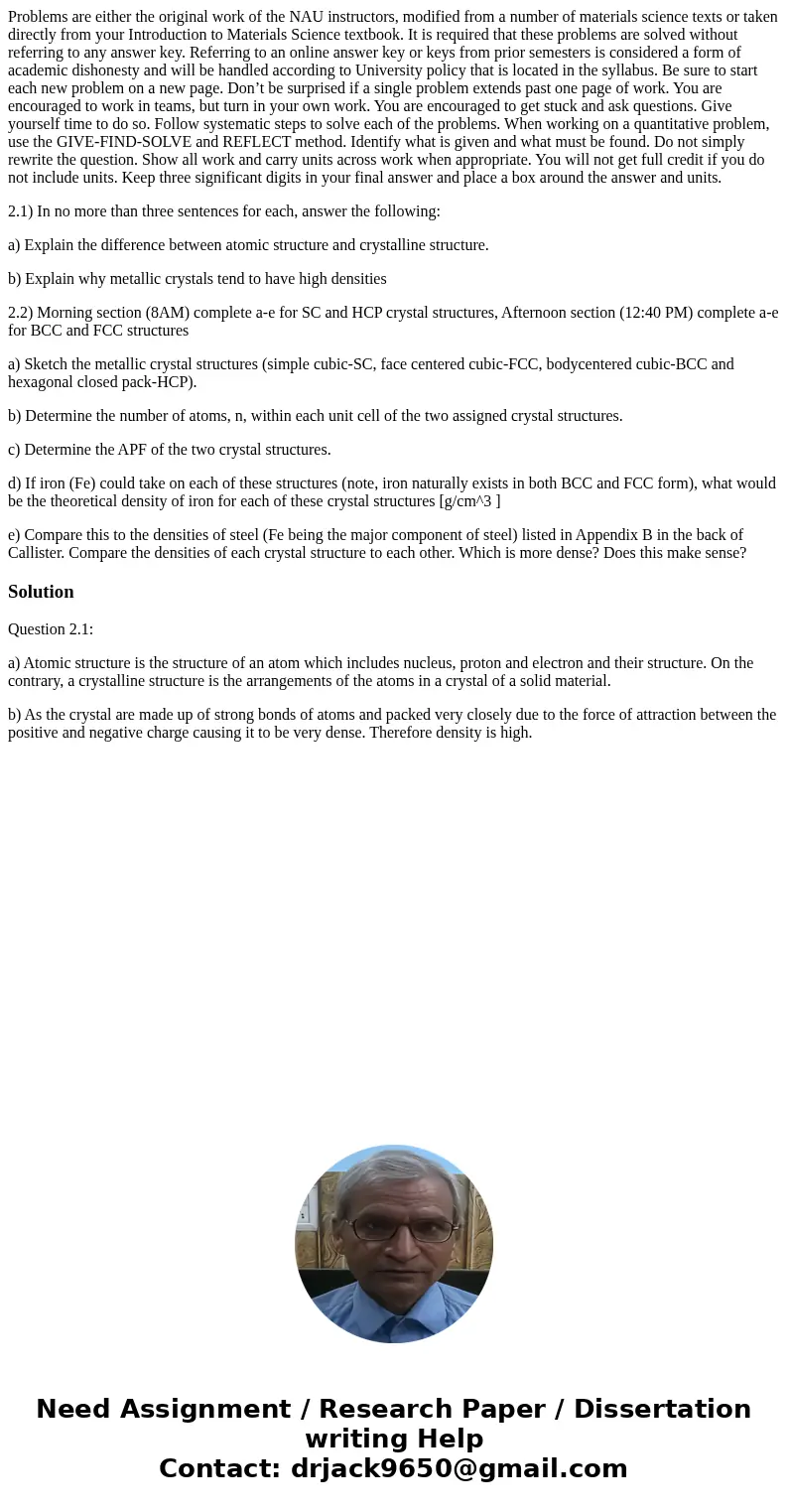Problems are either the original work of the NAU instructors
Problems are either the original work of the NAU instructors, modified from a number of materials science texts or taken directly from your Introduction to Materials Science textbook. It is required that these problems are solved without referring to any answer key. Referring to an online answer key or keys from prior semesters is considered a form of academic dishonesty and will be handled according to University policy that is located in the syllabus. Be sure to start each new problem on a new page. Don’t be surprised if a single problem extends past one page of work. You are encouraged to work in teams, but turn in your own work. You are encouraged to get stuck and ask questions. Give yourself time to do so. Follow systematic steps to solve each of the problems. When working on a quantitative problem, use the GIVE-FIND-SOLVE and REFLECT method. Identify what is given and what must be found. Do not simply rewrite the question. Show all work and carry units across work when appropriate. You will not get full credit if you do not include units. Keep three significant digits in your final answer and place a box around the answer and units.
2.1) In no more than three sentences for each, answer the following:
a) Explain the difference between atomic structure and crystalline structure.
b) Explain why metallic crystals tend to have high densities
2.2) Morning section (8AM) complete a-e for SC and HCP crystal structures, Afternoon section (12:40 PM) complete a-e for BCC and FCC structures
a) Sketch the metallic crystal structures (simple cubic-SC, face centered cubic-FCC, bodycentered cubic-BCC and hexagonal closed pack-HCP).
b) Determine the number of atoms, n, within each unit cell of the two assigned crystal structures.
c) Determine the APF of the two crystal structures.
d) If iron (Fe) could take on each of these structures (note, iron naturally exists in both BCC and FCC form), what would be the theoretical density of iron for each of these crystal structures [g/cm^3 ]
e) Compare this to the densities of steel (Fe being the major component of steel) listed in Appendix B in the back of Callister. Compare the densities of each crystal structure to each other. Which is more dense? Does this make sense?
Solution
Question 2.1:
a) Atomic structure is the structure of an atom which includes nucleus, proton and electron and their structure. On the contrary, a crystalline structure is the arrangements of the atoms in a crystal of a solid material.
b) As the crystal are made up of strong bonds of atoms and packed very closely due to the force of attraction between the positive and negative charge causing it to be very dense. Therefore density is high.

 Homework Sourse
Homework Sourse